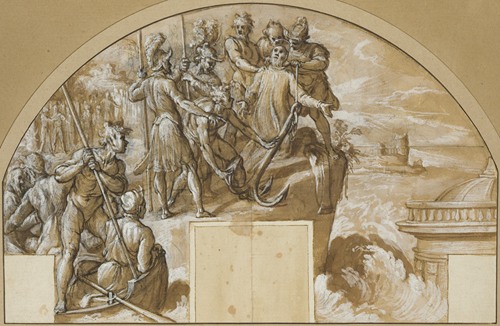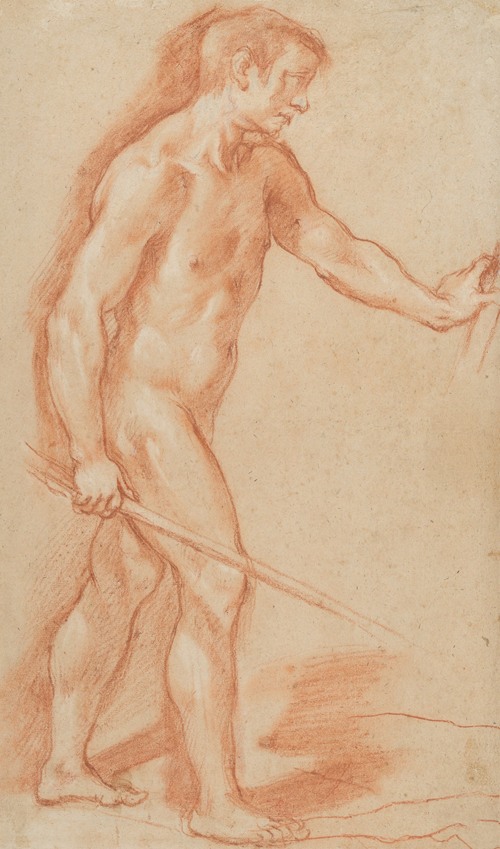


Agostino Ciampelli was an Italian painter of the Baroque period. He trained with Santi di Tito in Florence, and painted in Rome under Clement VIII, including a Crucifixion for Santa Prassede and a Saint Giovanni Gualberto in its sacristy; Angels on the walls above the choirstalls in the apse of Santa Maria in Trastevere; frescoes of the Stoning of Saint Vitale in San Vitale and further frescoes in the little church of Santa Bibiena; and The Visitation in Sant Stefano di Pescia. At the Basilica of San Giovanni in Laterano, Ciampelli frescoed the walls of the canons' sacristy, the "Sala Clementina".
Agostino Ciampelli was born in Florence. There is little known about his early childhood. Agostino trained in the studio of Santi di Tito, a leading artists of the Counter Reformation.
Agostino was admitted into the Accademia del Disegno in Florence in 1585. Some of his earliest known works include paintings for a temporary triumphal arch at the entry of Christina of Lorraine into Florence in 1589. These paintings were constructed by Santi and his pupils.
In Florence, Agostino he frescoed a Story of Esther and Ahasuerus in the Tornabuoni Chapel. Agostino also worked with Andrea Commodi at the Gesu, painting scenes from the life of Ignatius that would later adorn Commodi’s tomb in 1605.
Agostino traveled to Rome during the papacy of Clement VIII. There Agostino painted Crucifixion for Santa Prassede, angels on the walls of the apse of Santa Maria in Trastevere and a Visitation in Santo Stefano di Pescia. He also painted a Nativity of the Virgin in San Michelino Visdomini in Florence, and a fresco cycle of Old Testament themes for the Palazzo Corsini. He also painted the Chapel of St. Andrew in the Church of the Gesu in Rome, representing The Martydom of St Stephen on the walls; on the vault The Glory of the Virgin Surrounded by Holy Martyrs; and for the altarpiece, The Martyrdom of St Andrew.
Santi di Tito was a major influence to Agostino, impacting his style and assisting him in acquiring his skills. Another major role in Agostino’s life was Alessandro de Medici. Alessandro was the most important patron and protector to Agostino. Alessandro took Agostino to Rome in 1594 after Agostino went through schooling from 1590 to 1594 at Florentine Academy in Florence where he stayed until 1630.
Many works were produced with Alessandro and can be found in his titular church of Santa Prassede and at Sant'Agnese fuori le mura in Trastevere.


